Introductory Zen Practice Workshops
Introductory workshops are offered periodically at the zendo of the Montreal Zen Center (2nd floor).
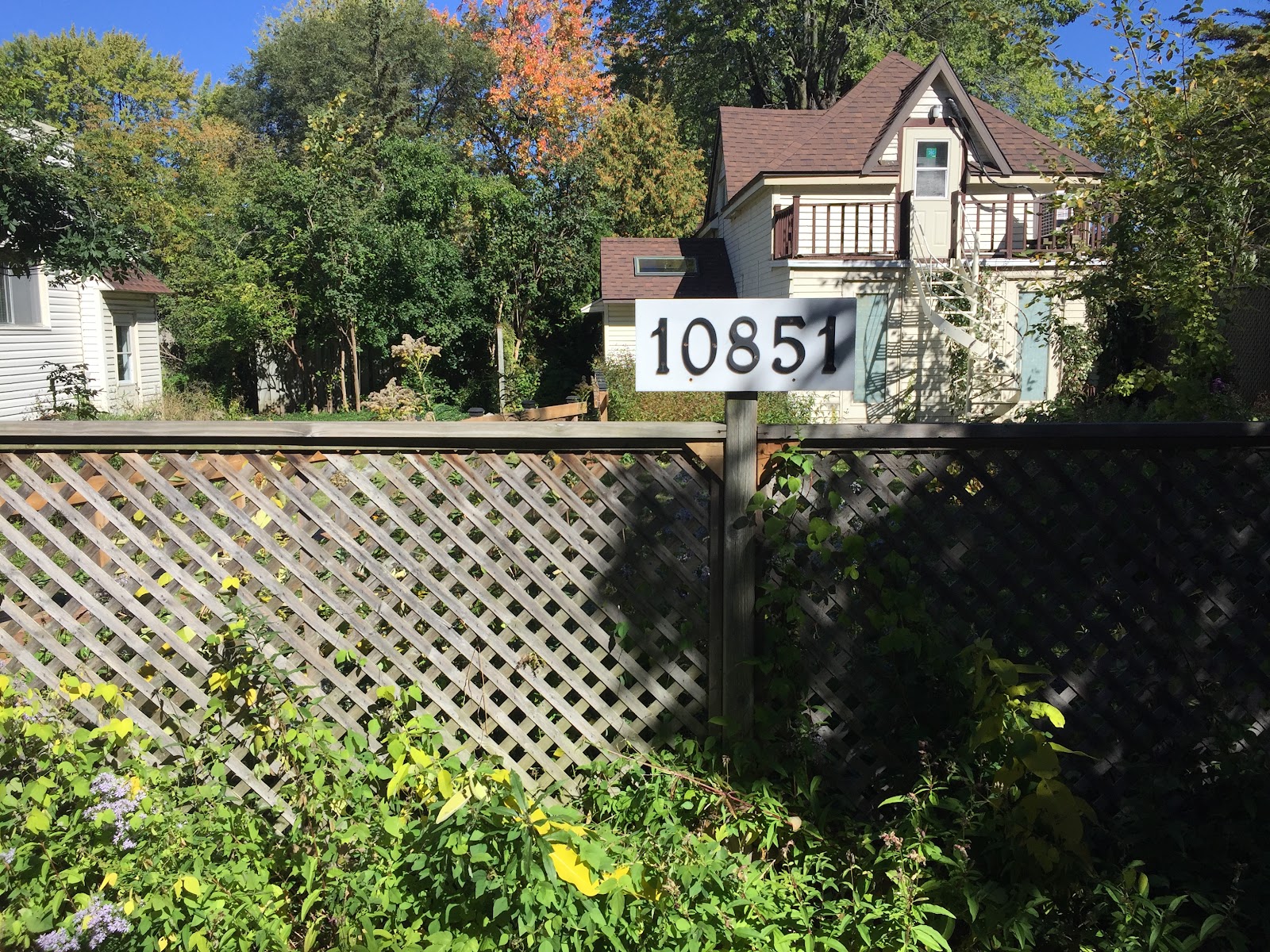
Workshops start at 9:00 am (arrive by 8:45 am) and end around 1:15 pm. The workshops begin with a brief discussion to contextualize Zen meditation and shed light on the “why” of the practice. The workshop continues with a demonstration of the different postures and meditation methods followed by a first round of zazen (meditation) of 20 minutes, and a brief question and answer period.
After a short break, the instructor presents the guidelines and rituals that accompany meditation at the Montreal Zen Center and a second round of zazen is held. The workshop concludes with a final period of discussion and a brief presentation on how to continue the practice at home and at the Center.
Introductory workshop, part II
Those who wish to do so can then attend a meditation session (zazen) at the zendo. We will send you the dates when it will be possible for you to participate.
Registration
To register for an introductory workshop, please send an email to: atelier.czdm@gmail.com with the following information:
- Name
- Phone number
- Languages spoken ( French / English / Bilingual )
- Date of the workshop you wish to attend
You can then make your Interac payment online to: don.czdm@gmail.com
The answer to the security question must always be: zazen8
The cost of a workshop is 65$. You will receive a confirmation following reception of your payment.
You have the possibility of postponing your participation twice in the workshop you initially registered for, provided you inform us by email as soon as possible.
Dress code
Wear soft, sober and uniform clothing. Avoid patterns or prints on your clothing to be as discreet as possible. Also, avoid clothing with hoods and if you have long hair, we recommend you tie it up.
Suggested reading
In order to help you prepare for the workshop, we invite you to read the book from Albert Low, Invitation à la pratique du Zen.
Unfortunately the attached PDF version is only available in French. The English version is called; Zen Meditation, Plain and simple. Printed versions can be found used either online or in used book libraries.
How to get to the Center
We are located at the corner of St-Hubert and Stanley Park on the banks of the Rivière des Prairies. You can access the site either by the entrance located at 10851 St-Hubert or 824 Stanley Park. Please come to the zendo entrance which is the small two story building behind the main house. Someone will be there to greet you.
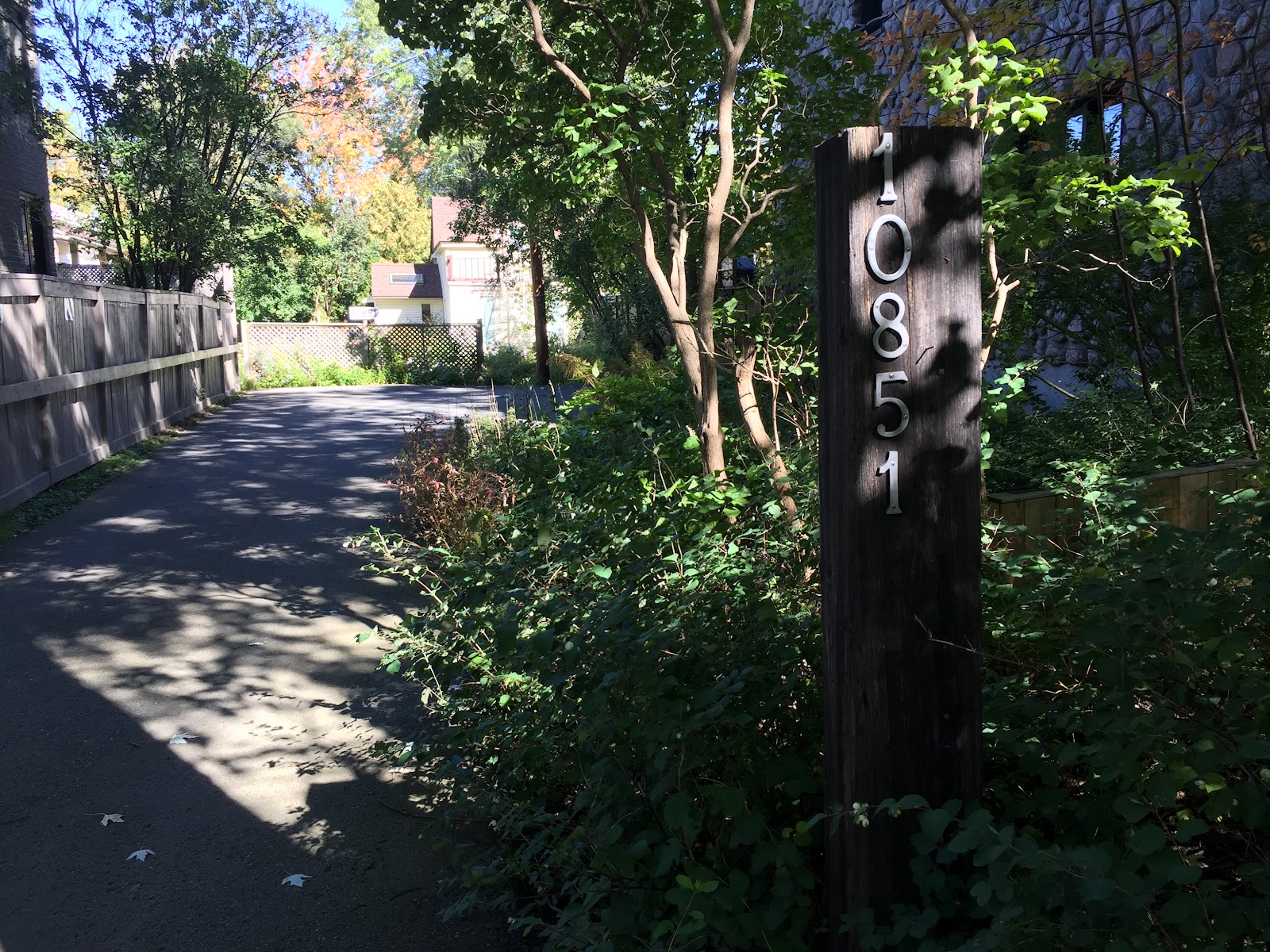
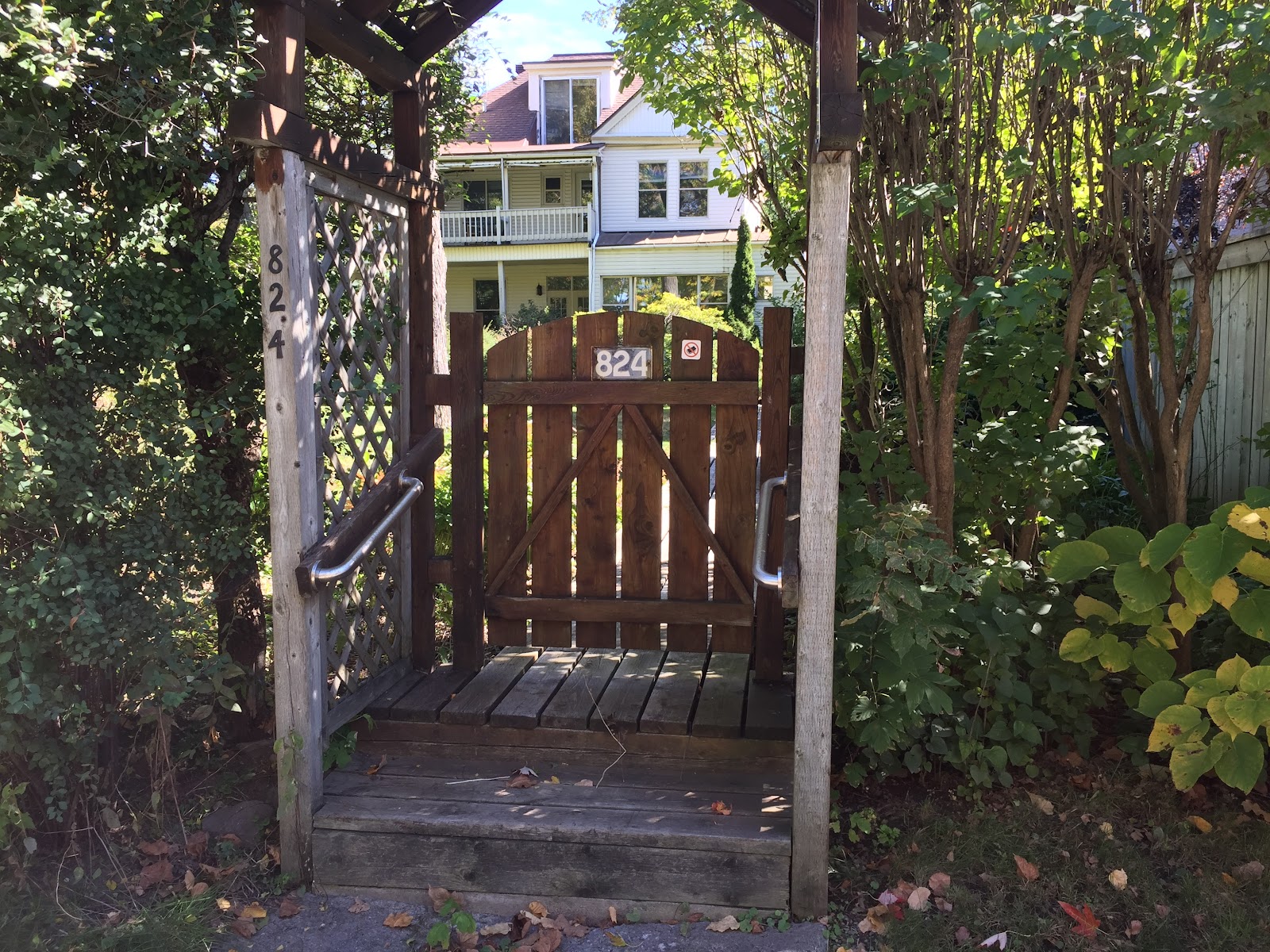
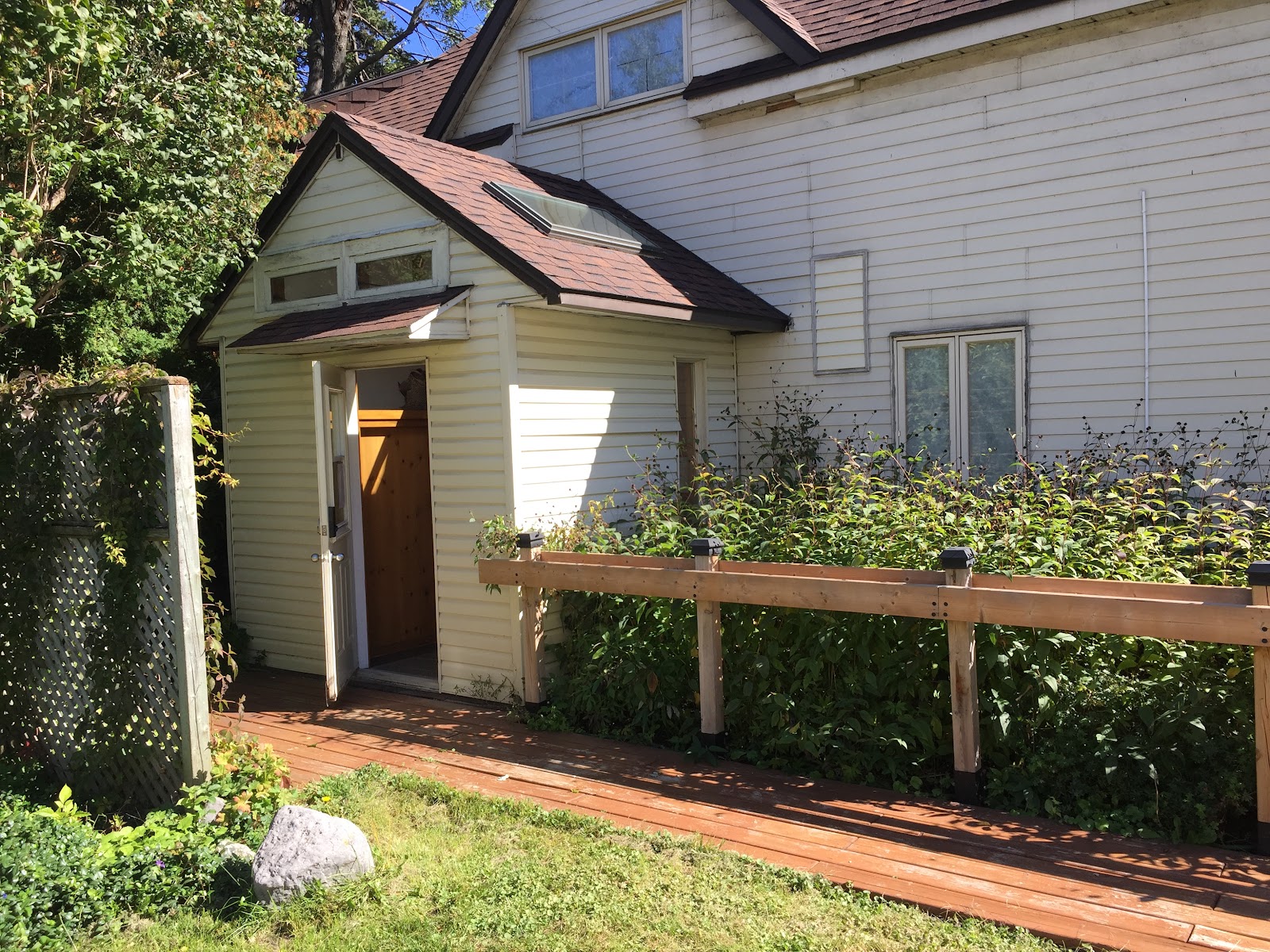
Parking
You can easily find parking on St-Hubert or Stanley Parc streets, near the Center. Be sure to read the signs carefully to avoid a parking ticket. You cannot park in the Centre's parking lot. The parking lot is small and therefore reserved for staff and resident members.
Becoming a member
Following the introductory workshop, those who wish to continue their practice at the Centre are invited to become members for a period of 3 months at a cost of $120 ($60 for students and people outside the Montreal area). This will give you access to all activities offered by the Center.
If you wish to become a member, send us your request by email to don.czdm@gmail.com
Please make sure to include the following information to your email :
- Your mailing address
- Your phone number
(This information is necessary for us to issue a donation receipt for tax purposes).
Then make your payment via interac.
The answer to the security question must always be: zazen8
We will send you a charitable donation receipt early in the following year. The amount entered will be the sum of your membership dues for that fiscal year.
The Centre is a non-profit organization and members are required to make a monthly contribution to ensure its financial health. No one benefits from these financial contributions. They are kept small and are used exclusively for community needs.
The Center exists for one reason only: to help people practice Zen. All of the community's resources are devoted to this.
Services offered to members
- Zazen at the zendo
- Members of the Center are welcome to practice at the zendo. Always be sure to check the calendar of events on our website before coming to the Center to make sure that the event you wish to attend will be taking place.
- Tuesday evenings, we hold three periods of meditation (Zazen). They always start at 7:30 pm (arrive before 7:20 pm) and end at 9:15 pm. The zazen (sitting meditation) periods last 30 minutes each, interspersed with five minutes of kinhin (meditative walking). All evenings end with chanting and prostrations.
- Sunday mornings, from 9:00 to 12:00. There is a meditation period, then we listen to a teisho (about 50 min.) followed by two periods of zazen.
- Online zazen: the schedule and how to access it are sent to members every Monday.
- Access to all talks (Teishos): These are recorded and offered by Mr. Low. The username and password will be sent to you once you have registered.
- Individual meetings: These are offered on Tuesdays and Sundays. You will find all information relative to this activity, at the end of the section ‘Guidelines’ just below.
- A series of 4 courses offered to members: Each course addresses a specific theme directly related to the practice. The courses begin with a 30 minute meditation period followed by a discussion related to the theme of the evening. At the end of each course, an exercise is proposed to help participants pursue and deepen their practice through daily action. This course is included with the three-month membership or alternatively at a cost of $65 for non-members.
- Group meetings led by a senior instructor where we discuss short texts related to the practice, inspired by Buddhism, but also by other spiritual traditions.
- The intensive meditation practice (zazen) days are held on Sundays once a month, and finally, retreats over several days are also offered periodically.
Guidelines
For newcomers and as a reminder to all
This document has been created to help you better integrate into the Montreal Zen Center community and to keep it running smoothly.
A lot of information is provided in this text. However, please be aware that most participants are familiar with these guidelines. You are therefore invited to participate by remaining attentive and by following the actions of each person within its context.
Throughout the document, we’ll refer to the following Japanese terms and their meaning as follows:
| Zendo | The building and also the upper floor where the meditation takes place |
| Zazen | Sitting Zen |
| Kinhin | Meditative walk |
| Hinkin | Timer’s bell |
| Han | A piece of wood which one strikes with a wooden hammer |
| Kyosaku | Stick used to strike the participants trapezoids to relieve tensions |
Arriving on the ground floor of the zendo
Maintain silence and lowered eyes
From the moment you arrive, in gestures and words, your full attention and silence are required. This guideline applies until the end of the activity.
On the second floor, silence and lowered eyes guidelines are even more emphasized.
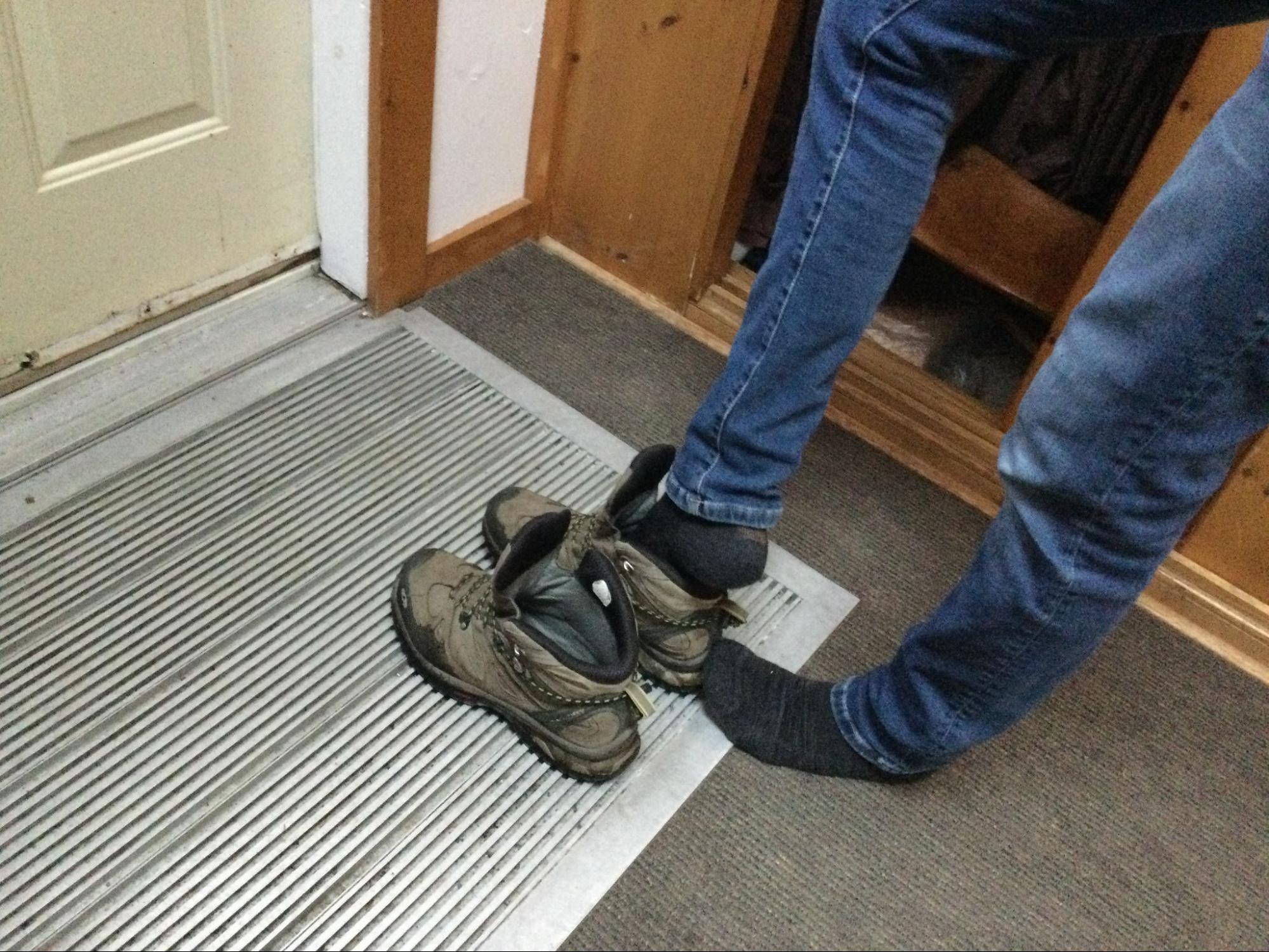
Once in the vestibule, remove your shoes conscientiously over the floor grid to keep the carpet clean. Place your shoes on the shelves.
Then open the sliding door, close it behind you, and proceed to the locker room. If there is a kinhin already in progress, join in until you reach the entrance to the locker room.
When you arrive at the locker room, place your belongings on a hook and, as needed, take one or more of the support cushions that are located behind the small doors at the back of the entrance door. There are also wooden benches on the floor in the closets.
It is preferable to leave all your personal belongings (watch, necklaces, rings, etc.) at home or in the locker room. Be sure to turn off your cell phone.
Then join the kinhin and go to the zendo to choose your place. Be aware that there is already a round cushion on each mat that is placed in an upright position when the space is available. If you have no other cushions to add, lay the round cushion flat to indicate that the space is taken. If you have cushions that you will not be using for the next period of zazen, place them on the floor under your seat. If you want to put down your glasses, put them under the front of your mat (wall side).
Entering into the zendo upstairs (meditation room)
A standing bow, with hands palm-to-palm, is performed each time you enter and exit the zendo. The bow is done near the altar. You may then move discreetly to a seat, avoiding walking in the center of the room.
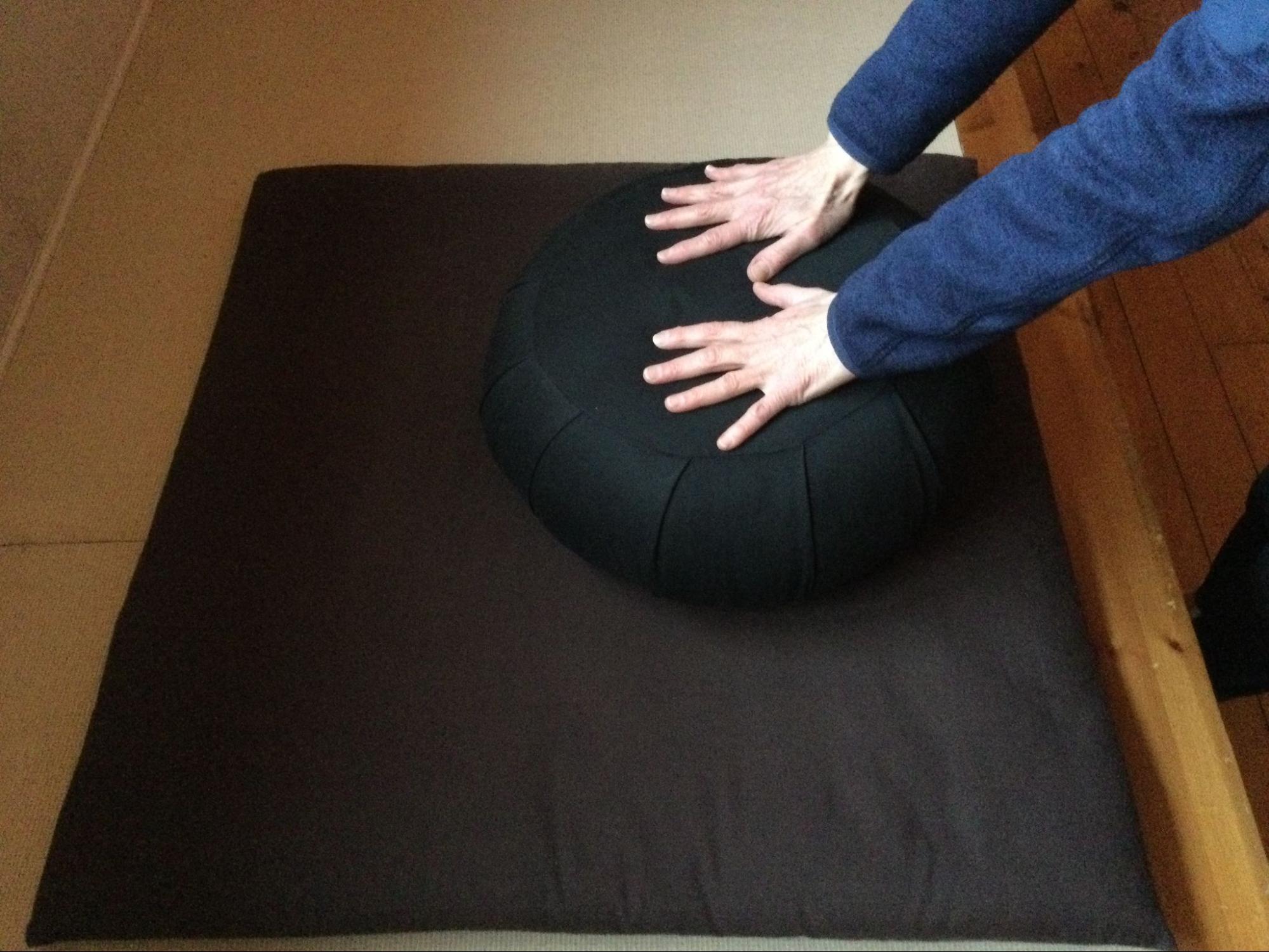
Once you have selected your place, you can sit in the zendo or join the kinhin in progress on the ground floor. This walk continues until the gong is heard, inviting you to go upstairs for zazen.
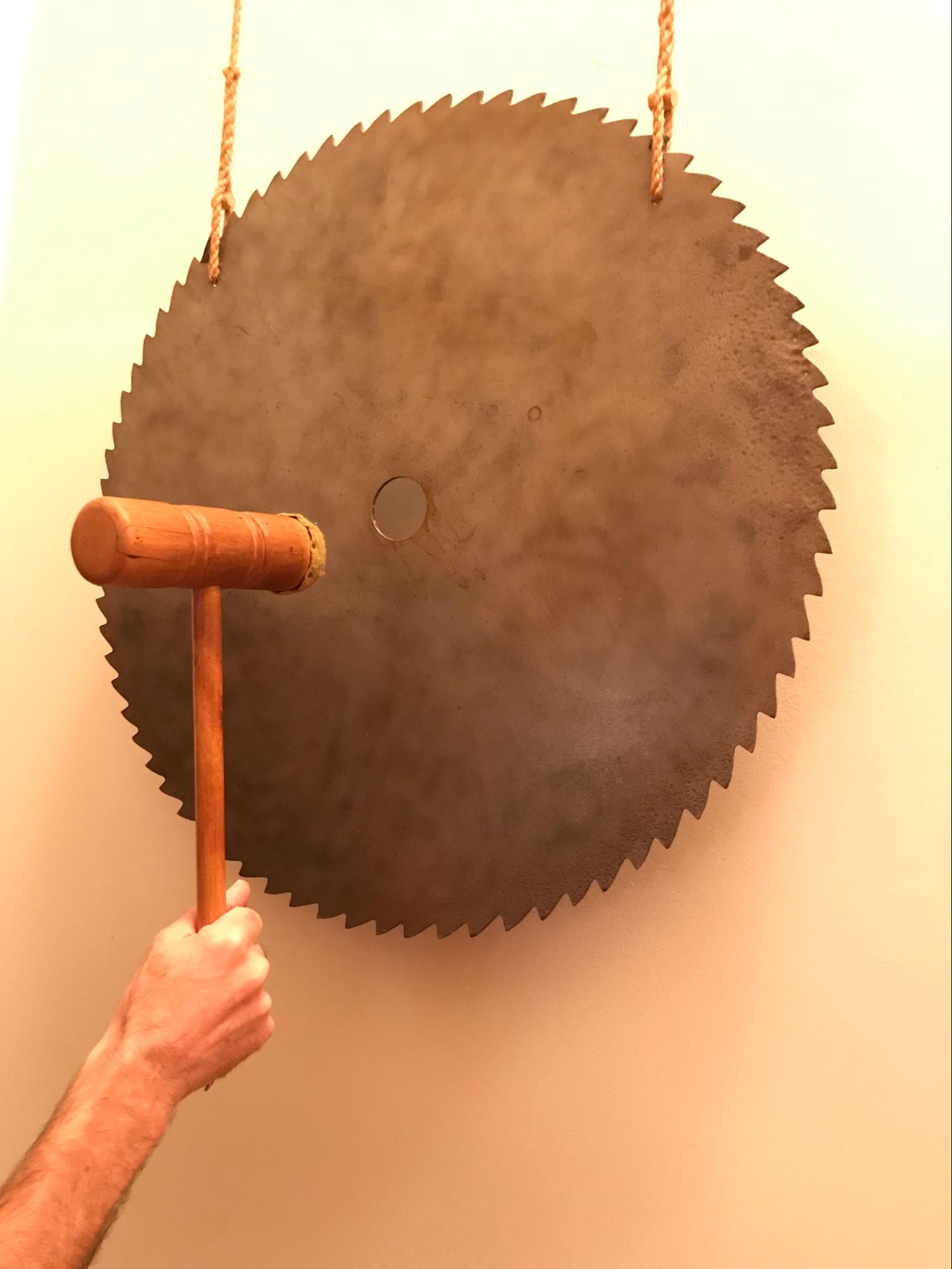
The course of a zazen period
Five minutes before the start of the zazen period, the gong will ring three times to invite you to go upstairs and take your place. Be sure to wait until the timer is no longer in front of the gong before heading upstairs.
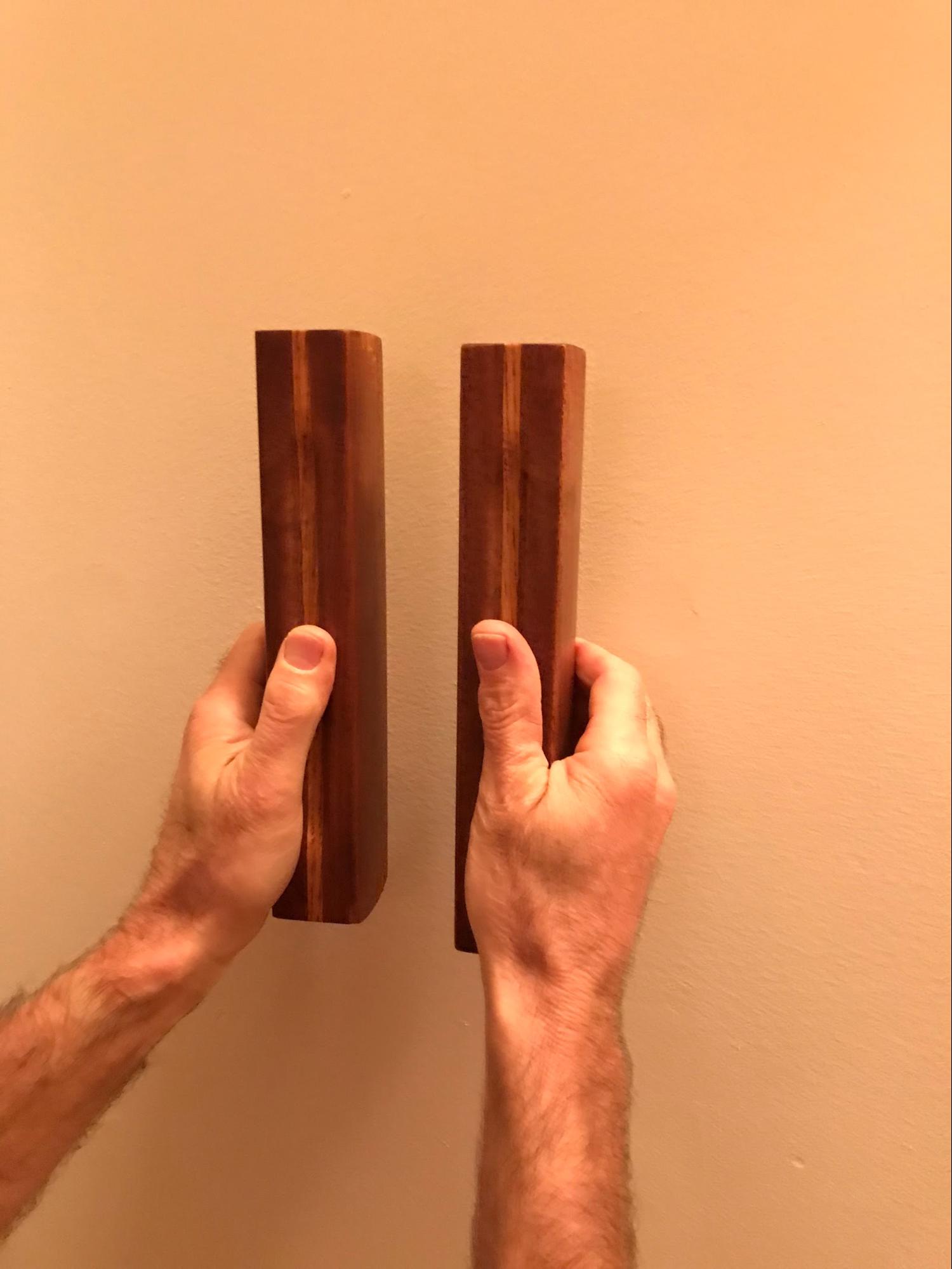
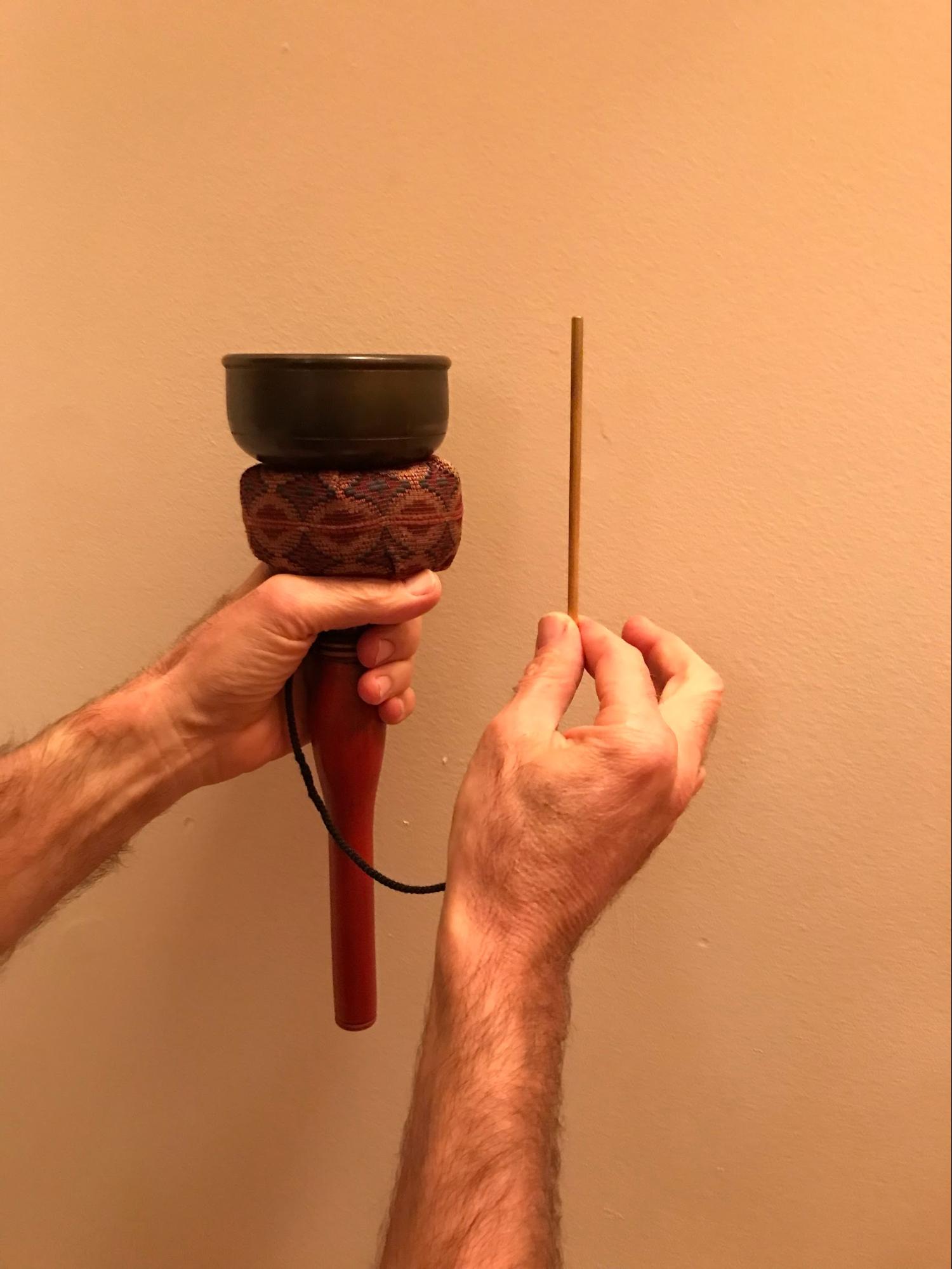
Once you are seated at your place, the timer will sound the clapper and the hinkin bell three times. Then the first 30-minute period of zazen begins. You must remain still during this period until the bell rings again, 30 minutes later.
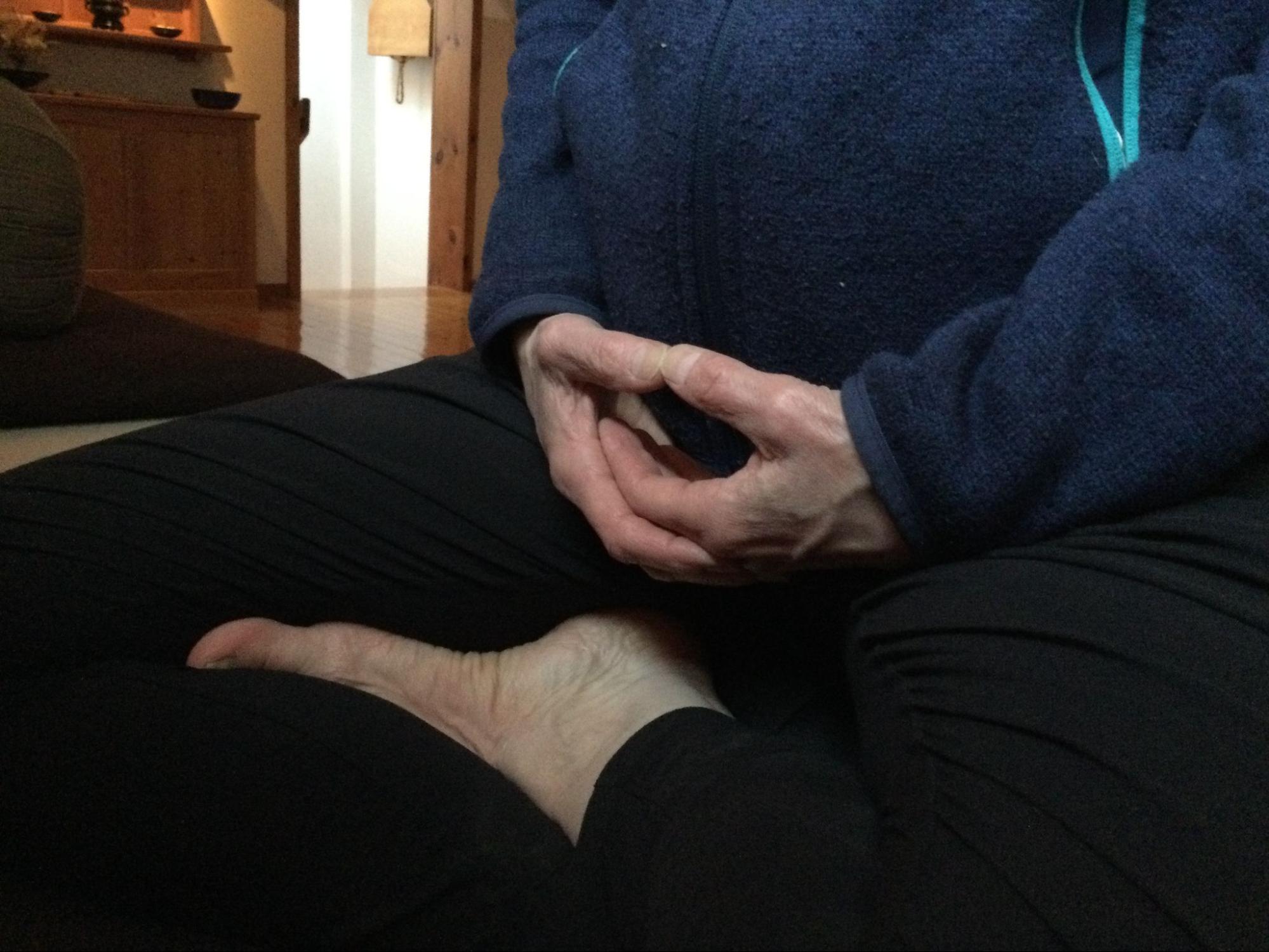
After 30 minutes, the hinkin bell will ring once. At this time, bow with your hands together facing the wall. Quickly stand up, turn to face the center of the room and wait with your hands together. The hinkin bell will ring again to invite you to bow facing the other participants.
Then turn around to carefully reposition your cushions on the mat and immediately begin the kinhin, which is done at a moderate and quiet pace in a clockwise direction.
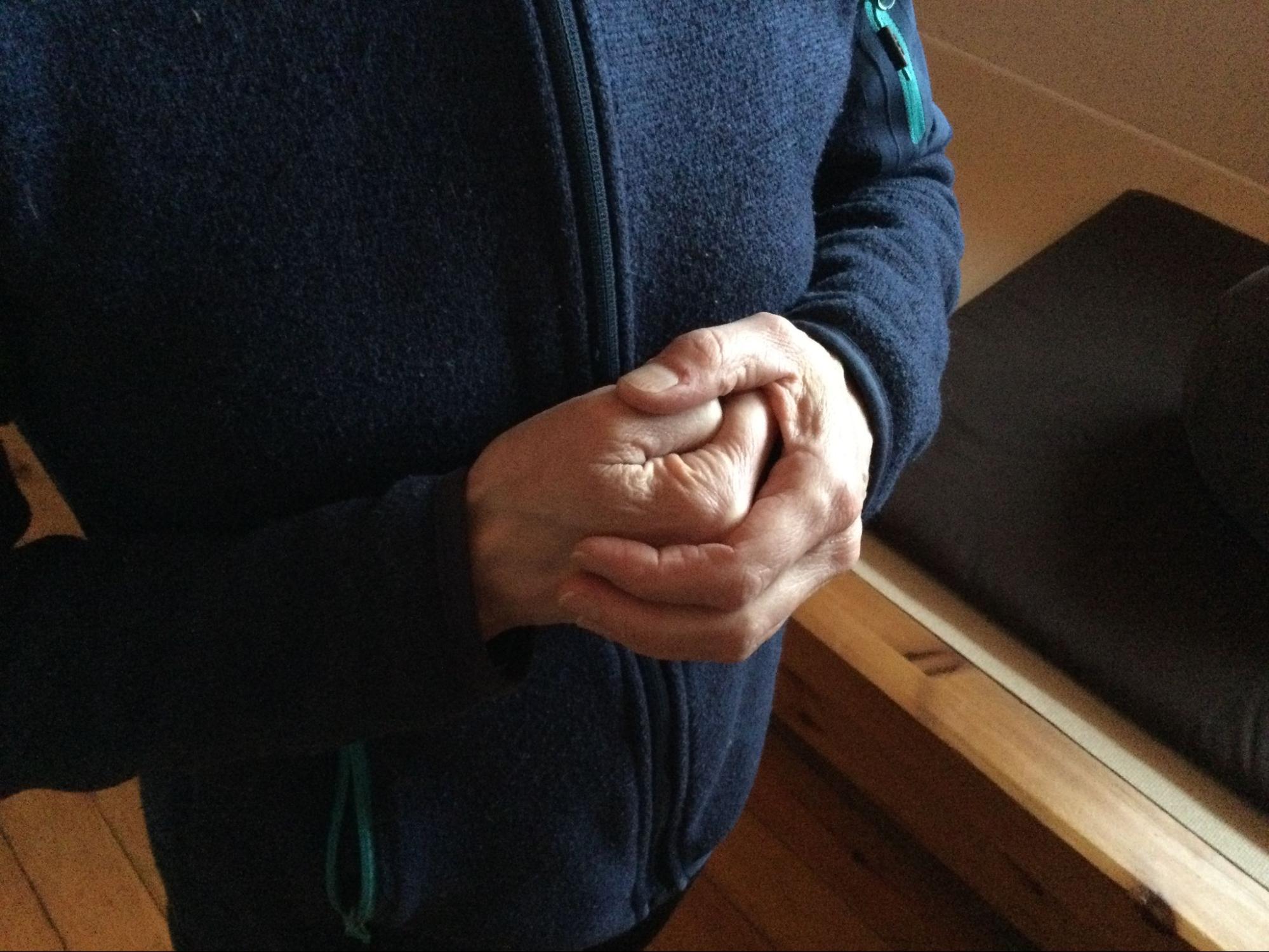
Position of the hands during kinhin
The thumb of the right hand is folded inward and the other fingers close over the thumb. The left hand wraps around the right hand and both hands rest gently on the solar plexus. The elbows are relaxed and supported on each side of the body.
Kinhin lasts five minutes between periods of zazen.
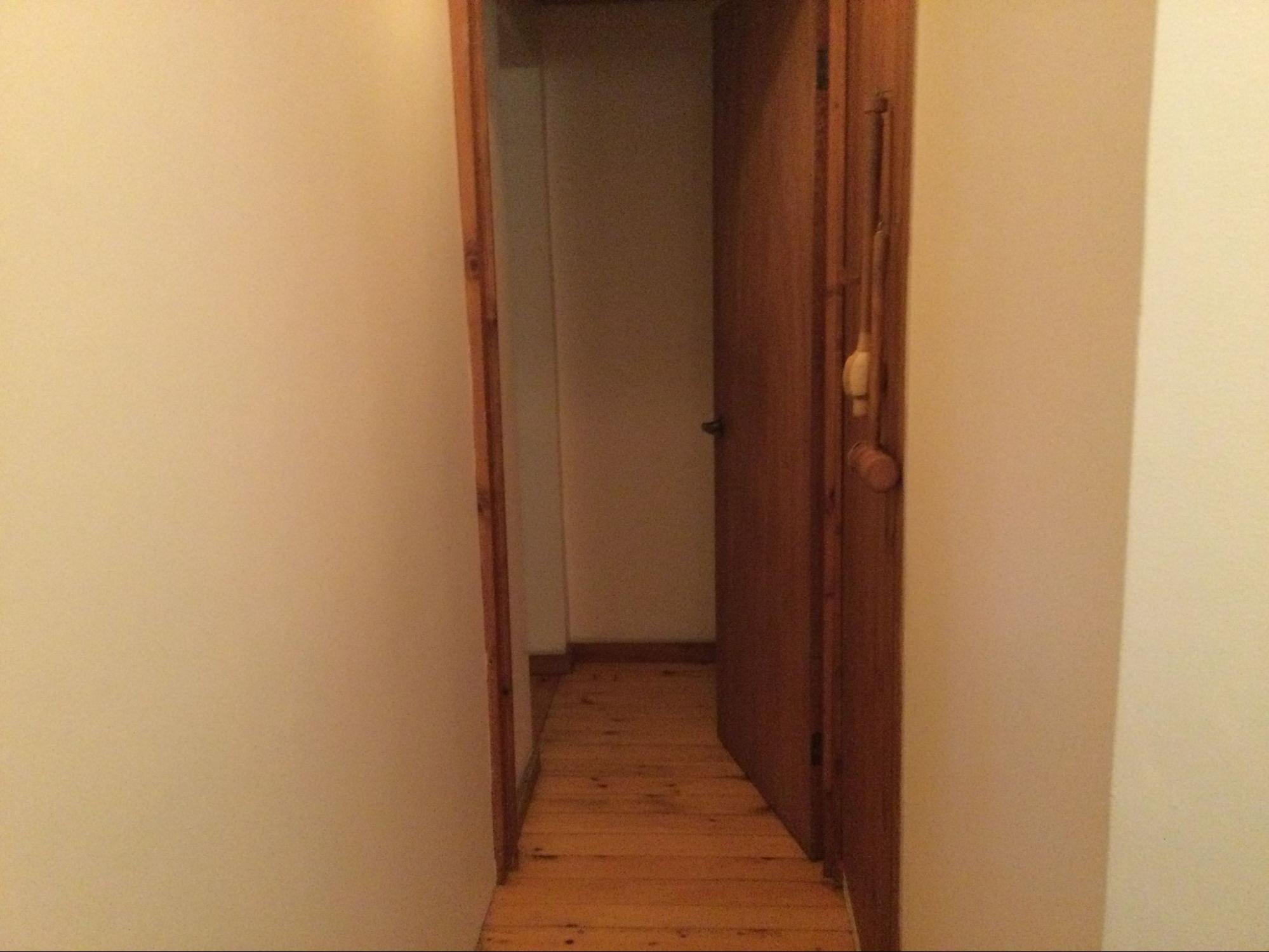
The use of the restroom
Kinhin is the right time to go to the restroom. It is located at the end of the small corridor just before the staircase that goes upstairs. There is a small light on the wall to the left of the altar on the ground floor. When it is on, it means that the door is open and the restroom is free. It is therefore important to always leave the door open when you leave the restroom.
In order not to interfere with the kinhin, it is important not to stop at the entrance of the corridor to wait for your turn. You must continue the kinhin until the light is on as you pass by it.
You can also use the two restrooms located on the ground floor of the house. They are accessible through the balcony door.
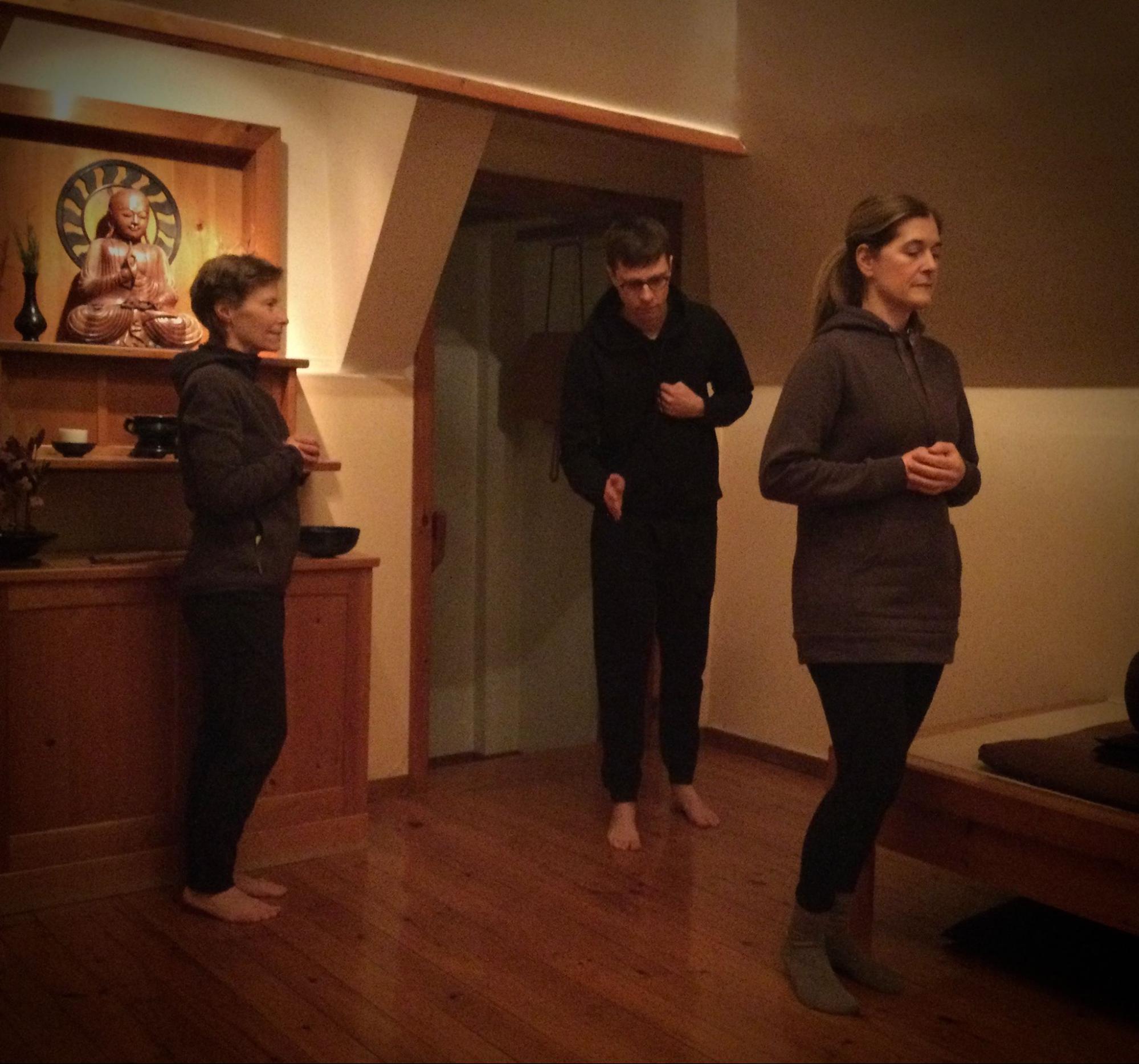
How to return to the kinhin on the 2nd floor
After using the restroom, you can continue the kinhin on the first floor or on the second floor. When re-entering the kinhin on the second floor, take care to place yourself in line between the two people sitting on either side of you when you are on the mat. This way, when the kinhin ends, you will find yourself back in front of your seat.
Here's how to proceed:
- We arrive at the floor, bow, and move slightly forward into the available space.
- Stand still while waiting to identify your place in the kinhin.
- We bow with a lowered arm to indicate our intention to enter the kinhin and we enter behind the person sitting to the right of our mat.
- If you can't remember your place in the kinhin, stay on the first floor to continue the kinhin. At the sound of the first hinkin bell, proceed upstairs and wait for the second bell to enter the zendo so you can go directly to your seat.
The bells at the end of the kinhin
Three hinkin bells will be heard:
- The first bell indicates that you should stand still facing the center of the room when you arrive at your seat.
- The second bell invites you to sit down without bowing.
- Next the clapper is heard and the hinkin bell rings three times indicating the beginning of the zazen period. Following the third bell, you must refrain from moving.
The kyosaku
If you wish to receive the kyosaku at the halfway point of the zazen period, you should join your hands palm-to-palm in front of you at shoulder height so that the gesture will be clearly visible when the monitor approaches you. When he touches your shoulder, drop your forearms on your legs. When the kyosaku is finished, you bow with your hands palm-to-palm.
Particulars
Special features of the end of evening zazen
At the end of the last period of zazen, the monitor invites the participants to take the sheet for the Chant in Praise of Zazen which is under the mat.
At the end of this chant, the Four Vows are recited.
We then move on to the prostrations:
- three prostrations before the altar,
- a bow facing the altar,
- a bow facing the center of the room,
- the sound of the clapper follows, and it is only at this sound that the hands are untied.
Afterwards, the mat is cleaned, the round cushion is repositioned vertically and the additional cushions are collected.
We then leave the zendo without delay and in silence.
Special features of zazen on Sundays
On Sunday, a teisho is offered. The duration of this activity is approximately 55 minutes. You are invited to assume a posture that, as far as possible, will allow you to remain still throughout the activity. If necessary, you may adjust your posture. It is recommended that you do this only once during the hour and that you remain discreet.
Throughout the activity, keep your eyes open and downcast to encourage quality listening.
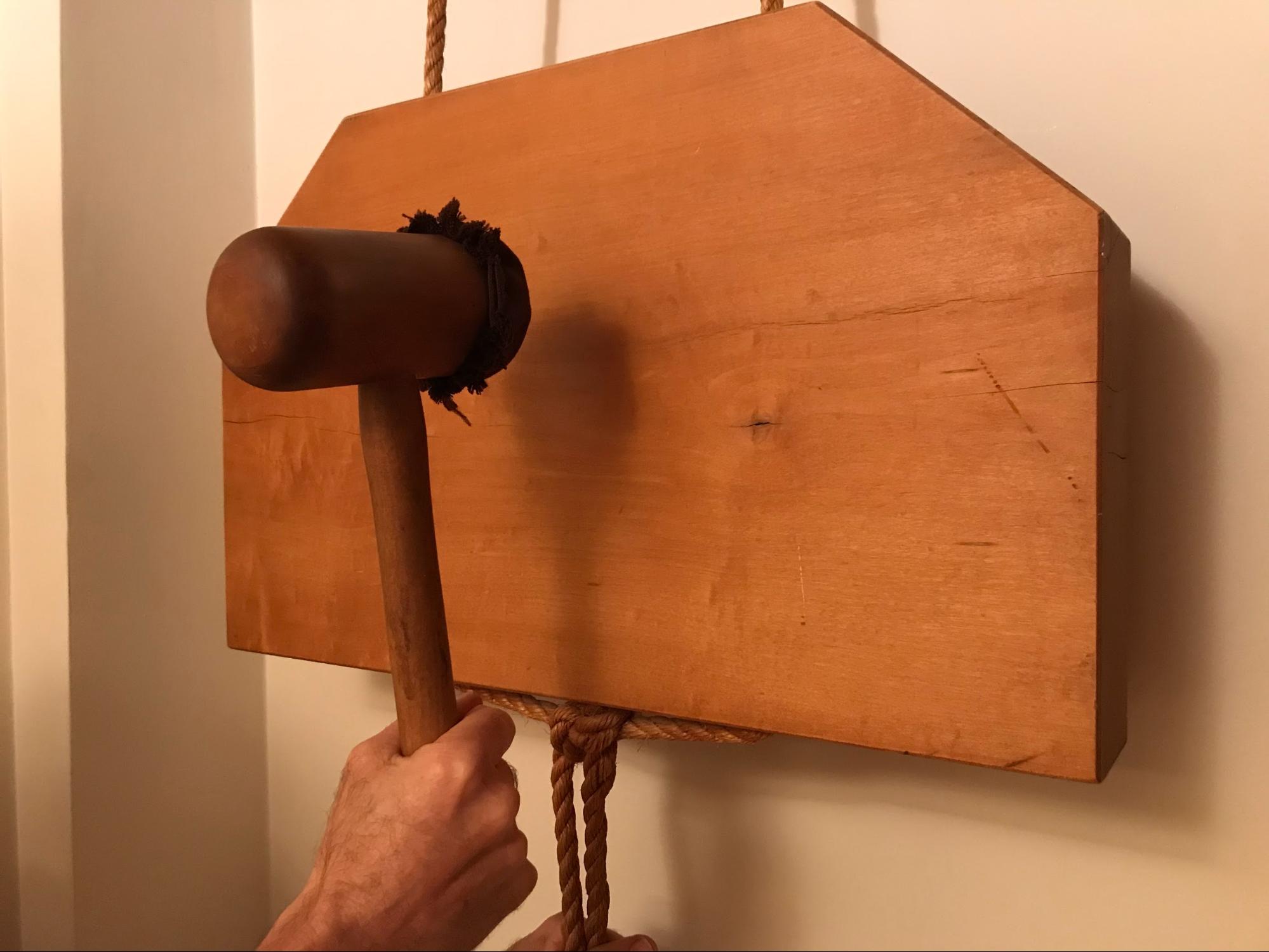
The teisho period is announced by the sound of the han at the end of the kinhin. Participants then sit facing the center of the room and prepare for the Chant in Praise of Zazen.
At the end of the teisho, the monitor joins his hands palm to palm and the participants are invited to do the same to chant the Four Vows.
This is followed by three prostrations as described above.
The clapper signals the end of this period and the kinhin follows shortly after.
One-on-one meetings and their functioning
Note: This service is offered by Louis or Jean-Luc. The name of whoever is present is displayed above the registration book for the One on One.
These meetings are offered on Tuesdays and Sundays. We strongly recommend that new members attend at least three times during the first three months of their membership. To register for an individual meeting, write your name upon arrival in the black notebook located on the table in the zendo entrance hall. These interviews take place on the first floor of the house, in the room facing the dining room’s double glass doors.
When the time comes, the monitor will touch your shoulder to invite you to come to the one-on-one meeting. Stand up quietly and head straight for the house. When the meeting is over, return to the zendo in the same manner, directly and quietly. To familiarize yourself with the various aspects surrounding this meeting, we invite you to watch carefully the video below by selecting the hyperlink that follows : CZDM - One-on-one
Procedure for payment by Interac
The email address is: don.czdm@gmail.com
The security answer should always be: zazen8
For your payment description, please use the space usually reserved for the security question.
Examples of payment descriptions:
- Introductory workshop + your name
- Membership + your name + period
- Donation + your name
- Retreat + your name + month
- Book + your name + title
For more information, call Francis at 514-609-4454.